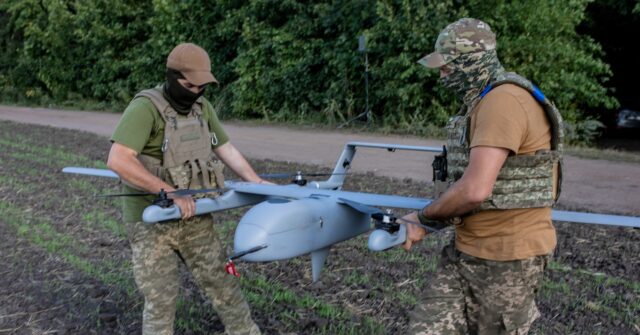In recent developments in the ongoing conflict between Ukraine and Russia, Ukraine has intensified its drone strikes on Russian fuel and energy facilities as part of a cross-border offensive targeting infrastructure that supplies the Russian military. On Sunday, Ukrainian drones struck the Stalnoy Kon oil terminal in the Oryol region of Russia, marking the second attack on this site within a week. This follows a pattern of Ukraine retaliating against Russia’s extensive aerial assaults on its energy grid, which have caused significant damage and put many civilians at risk as winter approaches. The situation remains dire as both countries prepare for the cold months ahead, highlighting the continued escalation of hostilities as the conflict nears its three-year anniversary.
Local officials in the Oryol region reported a fire at the Stalnoy Kon terminal as a result of the drone strike, with Russian forces claiming to have intercepted 20 incoming drones intended for the area. Eyewitness accounts and video footage of the explosion showed a prominent blaze lighting up the night sky, although the Russian governor asserted that the fire was extinguished relatively quickly without causing casualties or extensive damage. This incident adds to a narrative of reciprocal offensives, where both nations utilize drones to target strategic assets, which has become increasingly common in the conflict since the start of Russia’s invasion.
In a somber turn, Russia’s retaliatory strikes on Ukraine continue to inflict civilian casualties. Reports from Kherson province indicated that two individuals lost their lives when a Russian drone attack targeted the area late Saturday. In the Kharkiv region, a man was severely injured by another drone strike in Kupiansk, requiring amputation of at least one limb. The threat posed by Russian drones remains a significant concern for Ukrainian authorities and their citizens, who are confronted with the persistent danger of aerial assaults while grappling with the implications of ongoing military confrontations.
Air defense capabilities have played a crucial role in mitigating the impact of these drone strikes. Ukraine’s Air Force reported that it successfully intercepted over half of the 103 Iranian-made Shahed drones launched by Russia during the recent attack. Electronic warfare seems to have contributed to the failure of many drones to reach their targets, which underscores the evolving nature of aerial warfare in this conflict. Meanwhile, Russia also claimed interceptions of Ukrainian drones attempting to strike its territory, emphasizing the high-stakes cat-and-mouse game being played out in the sky.
Despite the aerial confrontations, ground battles continue, with Russian forces reportedly making incremental advances in northeastern Ukraine. The Defense Ministry of Russia has claimed the capture of two settlements: Lozova in Kharkiv and Krasne in Luhansk. These territorial gains may have tactical implications, though Kyiv has not immediately confirmed these developments. The situation remains fluid; as both sides engage in continual operations, the potential for further escalation looms large amid the harsh realities on the battlefield.
Overall, the conflict between Ukraine and Russia continues to unfold with severe consequences for civilian populations caught in the crossfire. As drone warfare changes the dynamics of the conflict, both nations remain locked in a struggle that has resulted in substantial human and material costs. With the harsh winter ahead and the ongoing focus on energy infrastructure, the fighting shows little sign of abating, leaving the prospects for peace and stability uncertain. The international community watches closely as the situation evolves, pondering how diplomatic efforts might address the underlying issues driving the conflict.

